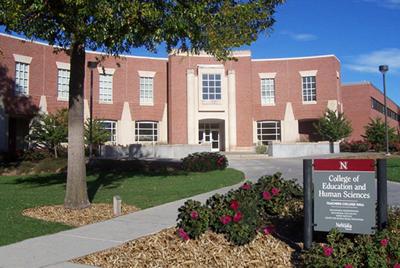Diverse and evolving Nebraska communities are driving the need for more capable teachers in world language and bilingual education.
That’s why schools in Omaha, Fremont and Lexington have adopted dual-language programs to maintain academic standards for all types of students.
Dual language programs are a type of bilingual education that tailor to the specific needs of both native English speakers and English Language Learners, or ELLs.
In these learning environments, the student population is ideally 50 percent native English speaker and 50 percent ELL. Courses are taught in English and a partner language, like Spanish. Janine Theiler, the world language education specialist at the Nebraska Department of Education, said dual-language programs are beneficial for both native speakers and ELLs.
“Student in dual-language programs emerge with double language proficiency and they’re able to interact in both of the languages,” Theiler said.
The increase in such programs in Nebraska means students in the University of Nebraska-Lincoln’s College of Education and Human Sciences can explore new opportunities in bilingual education.
“There is a specific pedagogy for teaching subjects in a language other than English,” said Dr. Isabel Velazquez, an associate professor of Spanish at UNL. “A dual language is assigned with a specific teacher in mind...you need to be good in both in knowing your subject area and knowing both languages.”
According to Theresa Catalano, an assistant professor of second language education and applied linguistics at UNL, new dual language endorsements for teacher candidates are in the final approval stages, and qualified applicants will be able to enroll next year.
Omaha Public Schools adopted dual-language programs 16 years ago with a full K-12 program after officials noticed standards falling for ELLs, according to NET News.
“In two-way programs...both students benefit,” Catalano said in an email. “They are given the opportunity to learn content in both languages and develop native-like pronunciation and intercultural competence through their daily interactions with native speakers from both languages.”
According to the website for Nebraska Loves Public Schools, a documentary project for Nebraska public schools, many graduates of these programs come to back to serve their communities.
While not all teacher candidates at UNL need dual-language training, every candidate must receive training on working with ELLs.
Students take part in practicums with ELLs and can also receive ELL endorsements.
“We have a come a long way at UNL in terms of preparing our teachers to work with English learners,” Catalano said. “Ten years ago, in my department of teaching, learning and teacher education, we only had one faculty member with such a focus, but we now have many.”
Theiler said she believes student populations in each district will continue to drive need.
“If these dual language programs take off,” Theiler said, “there will be a critical need for more teachers who are able to provide content in the partner language.”

